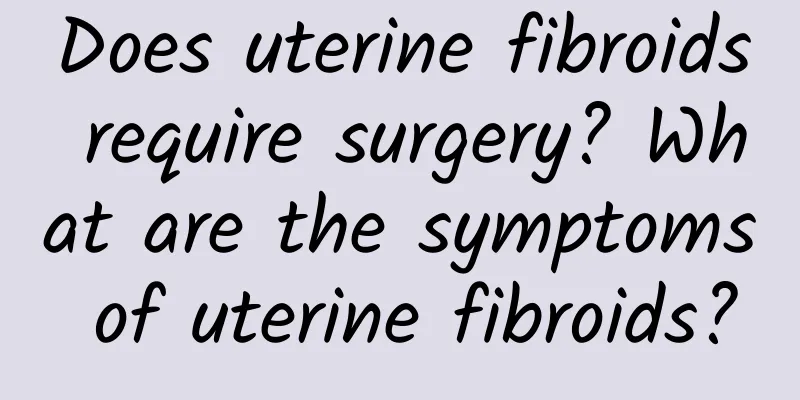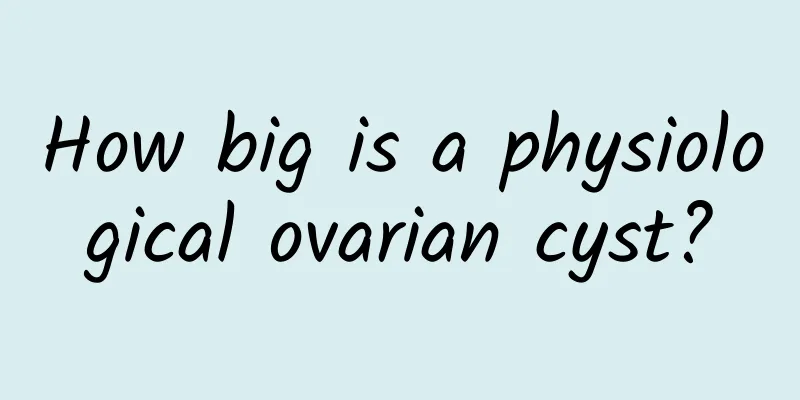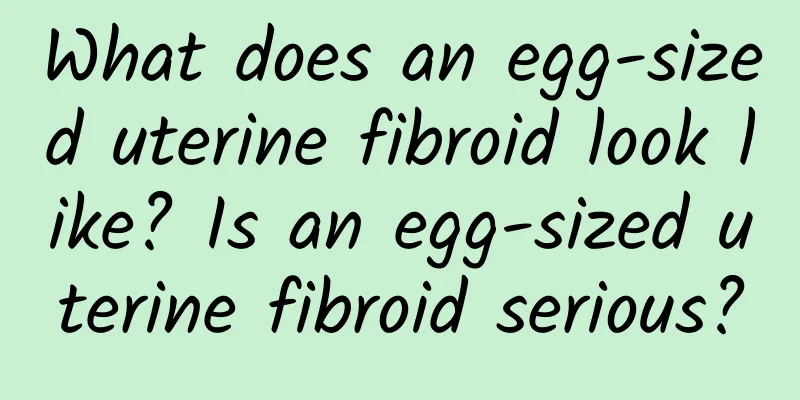Does uterine fibroids require surgery? What are the symptoms of uterine fibroids?

|
How many surgeries are needed for uterine fibroids? If a woman finds symptoms related to uterine fibroids, she needs to be formally diagnosed in time to determine whether treatment is needed and what treatment should be given. Different patients have different treatment situations, and some patients do not need treatment. The treatment of uterine fibroids needs to be determined according to the situation and development. So, how many surgeries do women with uterine fibroids need? Experts say that patients need to pay close attention to the disease and go to the hospital for examination and treatment early to prevent ovarian and fallopian tube lesions and induce uterine adenocarcinoma and cervical cancer. Uterine fibroids grow to the size of a fist, causing compression of other organs in the pelvis. Surgical resection can relieve symptoms, and the probability of large fibroids worsening is greater than that of small fibroids. Fibroids grow too fast, or do not shrink after menopause, but grow larger. Uterine fibroids cause heavy bleeding, or long-term menorrhagia and prolonged menstruation, leading to anemia, which cannot be cured by drugs. At this time, surgical treatment is required. Under normal circumstances, surgery can be considered for 6.0 or above, and it is recommended to consider it carefully. Surgery is best for the following situations 1. Fibroid torsion: If the fibroid twists at the pedicle, it may cause acute abdominal pain. If surgery is not performed in time, it may cause axial torsion of the uterus. 2. If menopausal patients with uterine fibroids continue to experience uterine bleeding, they should be alert to the possibility of endometrial cancer and should go to the hospital for examination in time. 3. Meet the conditions for surgical treatment: Uterine fibroid surgery is to remove uterine fibroids and is suitable for existing children with large fibroids with a diameter greater than 5cm; menorrhagia and ineffective conservative medication; or compression symptoms; submucosal fibroids; and rapidly growing fibroids. 4. Severe pain: severe abdominal pain, radiating pain caused by tumor compressing nerves. Uterine fibroids symptoms Most uterine fibroids have no obvious symptoms and are only discovered accidentally during a physical examination. Symptoms are related to the location, size, and degeneration of the fibroids. Common symptoms include: (1) Increased menstrual volume and prolonged menstruation: more common in large intramural fibroids and submucosal fibroids. Fibroids increase the uterine cavity and the area of the endometrium, affecting uterine contraction and hemostasis during menstruation. In addition, fibroids may squeeze the veins near the tumor, causing congestion and dilation of the uterine venous plexus, resulting in increased menstrual volume and prolonged menstruation. The symptoms of submucosal fibroids are more obvious. If submucosal fibroids are accompanied by necrotic infection, there may be irregular vaginal bleeding or bloody purulent discharge. Long-term increased menstrual volume may lead to symptoms such as anemia, fatigue, and palpitations. (2) Lower abdominal mass: The mass cannot be felt within 12 hours of the uterus. When the uterus is more than 3 months pregnant, a hard mass can be felt from the abdomen, which is more obvious when lying flat in the morning. Huge submucosal fibroids can prolapse from the cervix or even outside the vagina, and the patient can prolapse the mass from the vulva. (3) Increased vaginal discharge: Intramural fibroids increase the area of the uterine cavity, increase endometrial secretions, and are accompanied by pelvic congestion, leading to increased vaginal discharge; once the submucosal fibroids of the uterus are infected, there will be a large amount of purulent vaginal discharge. If the fibroids are ulcerated, necrotic, or bleeding, there may be bloody or purulent vaginal discharge with a foul odor. (4) Compression symptoms: If the anterior uterine wall fibroids compress the bladder, it can cause frequent urination and urgency; cervical fibroids can cause dysuria and urinary retention; posterior uterine wall fibroids can cause lower abdominal swelling, constipation and other symptoms. Broad ligament fibroids or giant cervical fibroids can develop laterally, embed into the pelvic cavity, compress the ureter, and cause ureteral dilatation, hydronephrosis, or even non-function of one kidney. (5) Other symptoms: Common symptoms include mild lower abdominal swelling and back pain, which may be aggravated by menstruation. It may cause infertility or miscarriage. Acute lower abdominal pain, vomiting, fever and local tumor tenderness; subserosal myoma pedicle torsion may cause acute abdominal pain; submucosal myoma of the uterus may also cause paroxysmal lower abdominal pain. |
>>: How big is the uterine fibroid before surgery is needed? Treatment methods for uterine fibroids
Recommend
What should I do if my vulva itches and my leucorrhea is dreg-like and my waist hurts?
What should I do if my vulva itches and my leucor...
Can pelvic inflammatory disease cause miscarriage? Usually not
What women fear most after becoming pregnant is m...
Eat more after exercise? Improve basal metabolism without gaining weight
I feel hungrier than usual when I exercise, but m...
Can women eat vinegar after miscarriage?
In the case of an unexpected pregnancy, abortion ...
Knowing the symptoms of uterine fibroid complications will pay attention to early treatment
Uterine fibroids are a common disease among women...
What should I eat to replenish my body after a miscarriage in four months of pregnancy
After a miscarriage, you need to help your body r...
Strawberry Transformation is a Good Recipe to Cleanse the Body and Reduce Fat
Strawberry Point: Live vitamins that help with bo...
Cost of Chinese medicine treatment for hyperprolactinemia
How much does it cost to treat hyperprolactinemia...
3 tips for family-friendly exercise to fight against fat loss
With the arrival of waves of cold winter, many pe...
How to treat cervicitis?
Cervicitis is a common gynecological disease and ...
Why is Bartholinitis difficult to cure?
Nowadays, women do not pay attention to their hea...
Patients with adnexitis need to pay more attention to nursing work in their daily life
Adnexitis is a common disease in life. During the...
Can I drink coconut water if I have ovarian cyst?
Patients with ovarian cysts can usually drink coc...
In what situations is artificial abortion not appropriate?
In what cases is it not suitable to have an artif...
Will a left ovarian cyst go away on its own?
Will a left ovarian cyst go away on its own? Left...









